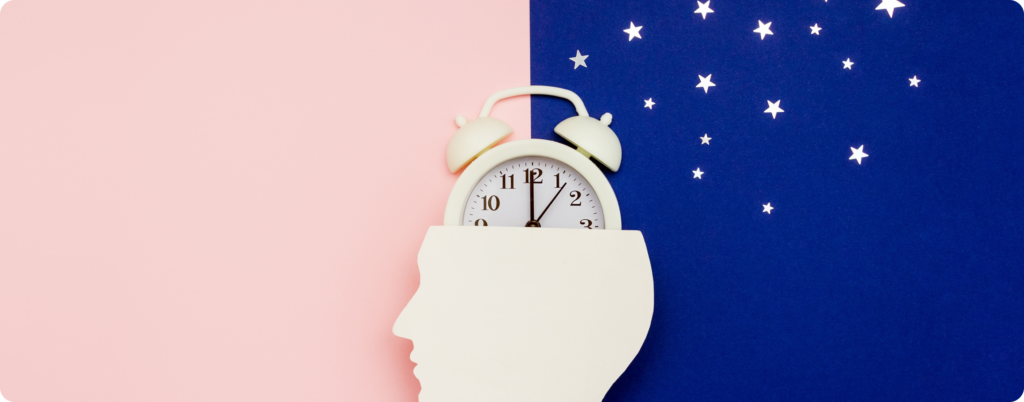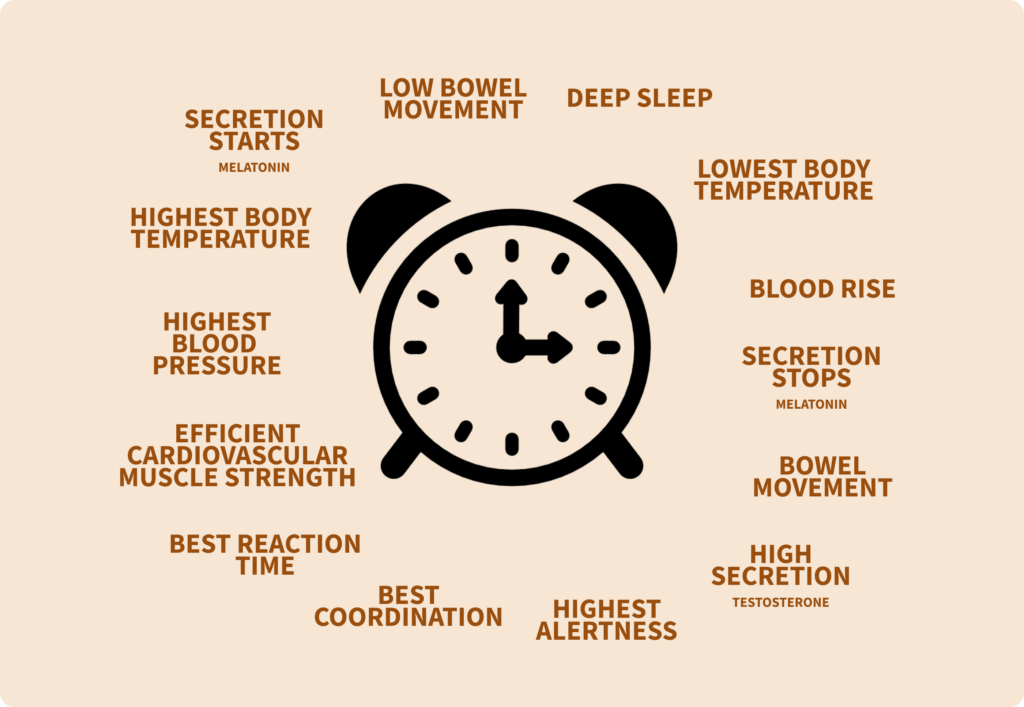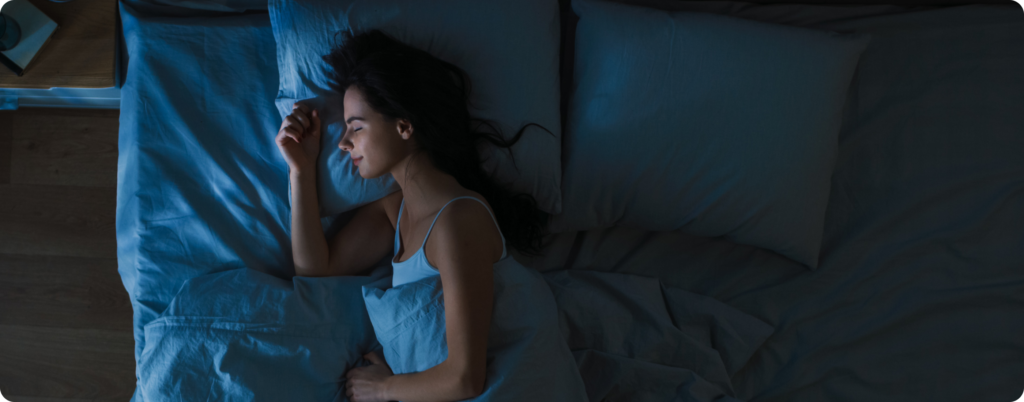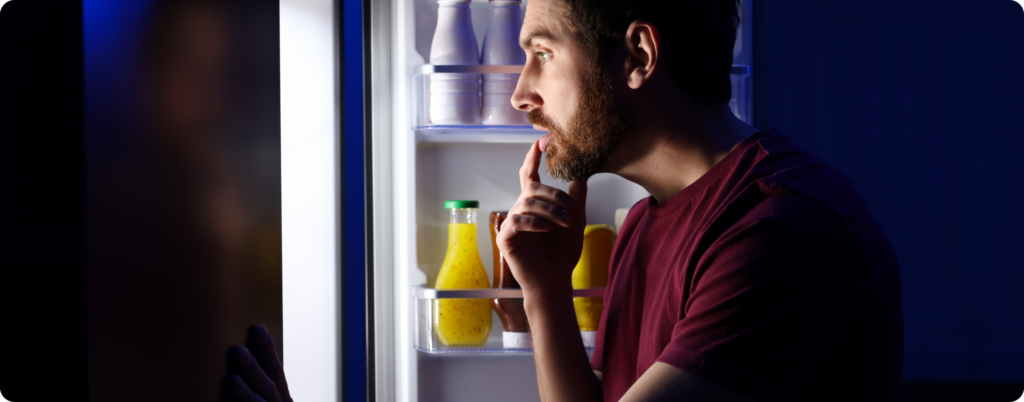PLEASE NOTE: The information in this blog is for educational purposes only. It is not a substitute for professional medical advice. Consult your healthcare provider if you’re seeking medical advice, diagnoses, or treatment.
The modern environment for humans has changed dramatically. Now…
- Over 80% of humans no longer experience naturally dark nights (1)
- Over 80% of the global population now has regular access to smartphones (2)
- Around 99% of Europe and the United States are exposed to light pollution (3)
- An estimated 70% of US adults work indoors (4)
- About 20% of the US workforce have overnight shifts (5)
While it may not be as obvious as the changes to our diet and lifestyles, these stats show how technology completely changes the way people interact with the world around them.

When you think of health, diet, exercise, and supplements likely come to mind before anything else. Yet, one crucial factor almost gets overlooked entirely despite its massive impact on human health: circadian rhythm.
What is Circadian Rhythm? and Why Is It Important?
A circadian rhythm, meaning “about a day” in Latin, is any biological process or cycle lasting about 24 hours (6).
These rhythms help shape behavior, physiology, and health while allowing organisms to respond to the outside environment (7). Circadian rhythms evolved to help anticipate changes due to the sun’s path in the sky (8).

The human circadian system consists of a central pacemaker in the brain known as the suprachiasmatic nucleus (SCN), along with peripheral clocks in the liver, heart, skin, intestines, adipose tissue, and other areas (9). These clocks found throughout all systems communicate and allow the body to generate an internal cycle that then syncs with the earth (10, 11, 12).
Light (and darkness) is the primary stimulus for the SCN, while other signals (known as “zeitgebers”), like meal timing, exercise, diet, and body temperature, drive the circadian rhythm within the body (13, 14).
Many physiologic processes like digestion, metabolism, body temperature, hormone secretion, and cardiovascular health are regulated by the circadian clock (15, 16, 17)

Even heart attacks and other cardiovascular events display a pattern, occurring most frequently between 6 am and noon (18, 19)!
Despite its importance, this internal clock is frequently disobeyed by humans (20).
Lights Impact on Your Circadian Rhythm
With the advent of electrical lighting around 200 years ago, millions of years of human evolution were radically altered (21). Modern society can continuously operate 24 hours a day.
Instead of bright days spent outside and dark nights, most of our time is now spent indoors under lighting that’s 100 times less powerful than daylight and around 1,000 times more intense at night (22). It should come as no surprise that this can negatively affect the body’s internal clock and sleep cycle.

In addition to less exposure to daylight, people are now showered with artificial light from phone and computer screens, TVs, and home lighting (23). This can be more problematic at night when the circadian system is especially sensitive (24, 25).
Artificial light at night (ALAN) can hinder melatonin secretion and immune function, delay sleep timing, and may lead to circadian disruption (26, 27, 28). Long-term circadian and sleep disruption has been connected to insulin resistance, Alzheimer’s disease, obesity, diabetes, and cardiovascular disease (29).
Blue light, in particular, gets most of the attention for light at night. While blue light at night can delay the release of melatonin (which is crucial for inducing sleep), during the day, it’s important for melatonin suppression, alertness, and cognitive performance (30, 31).
The Connection Between Sleep and Your Circadian Rhythm
Sleep is intricately connected to circadian rhythms. The sleep/wake cycle is crucial for proper bodily functioning and healing (32). This cycle then goes on to direct hormone release, body temperature, digestion, and eating habits.

Many important functions happen during sleep, such as (33, 34, 35):
- Memory consolidation
- Metabolic regulation
- Immune system function
- Cardiovascular system recovery
- Detoxification
- Hormone regulation
- Cellular repair
The global use of electrical lighting and reduced sunlight exposure have significantly changed sleep timing and wakefulness (36). Due to working a night shift, visiting a new time zone, or social activities, sleep can easily fall out of sync with biological clocks (37).
A phenomenon has emerged called “social jetlag,” affecting over 70% of the population, where your actual sleep times don’t line up with the circadian clocks within your body (38, 39). This can be exacerbated by compensating for reduced sleep quality during the week by sleeping excessively over the weekend.
Inadequate sleep is linked to increased body mass index, obesity, diabetes, hypertension, cardiovascular disease, and other serious health challenges (40, 41, 42).
So, a consistent sleep schedule is crucial for circadian rhythm alignment (43). Sleep can be optimized by getting natural light throughout the day, exercising, paying attention to meal timing, cutting down on electronics prior to bedtime, and creating a relaxing environment (44, 45).
The Relationship Between Melatonin & Circadian Rhythms
A core aspect of any conversation around circadian rhythms is the hormone melatonin. Emerging shortly after birth, melatonin helps establish a circadian rhythm in infants (46).
Melatonin is mainly created in the pineal gland but can also be made in the retina and gut (47, 48). Given that it’s almost exclusively produced at night (when sleeping and fasting), melatonin levels are lower during the day and start to rise about two hours before bedtime (49, 50, 51).
With morning sunlight exposure, melatonin production happens sooner, allowing you to fall asleep more easily at night (52). Light exposure at night can delay or suppress melatonin production and make it more difficult to fall asleep (53, 54).

Melatonin is believed to provide the body with information about the time of day and seasonality and help modulate the immune system (55, 56).
Lack of melatonin production can have a major negative impact on sleep onset and circadian rhythms (57, 58). Inadequate melatonin levels may also contribute to the development of cancer, cardiovascular disease, obesity, diabetes, depression, and other chronic diseases (59).
Protecting your melatonin levels is paramount for circadian and overall health.
How Does Diet Impact Circadian Rhythm?
Diet is another key aspect of circadian rhythm disruption, as humans and other animals are primed to eat at certain times (60). Critical hormones that can influence body composition and appetite, such as leptin, ghrelin, and insulin, are all under circadian regulation (61).
Food is also the primary synchronizer for clocks in the gastrointestinal tract, liver, and pancreas (62). Unsurprisingly, the massive rise in social jet lag, shift work, irregular meal times, and other circadian disruptions can interfere with the proper functioning of cardiovascular, immune, endocrine, and other critical bodily functions (63).
So how (and when) are humans supposed to eat?
It appears that circadian rhythm is optimized when meals are consumed between sunrise and sunset (about a 10-12 hour window)(64, 65). Eating at night can be considered physiologically incorrect (66). Yet, Americans’ dietary habits have become wildly inconsistent and pushed back into the night (67).

Eating close to bedtime may contribute to a host of problems, as organ and brain clocks can be thrown out of alignment, and digestive processes are less active in the evening (68, 69). A connection is emerging, showing that nighttime eating leads to increased weight, glucose intolerance, intestinal permeability, oxidative stress, and disrupted sleep (70, 71).
Evidence suggests that eating during the daytime can improve body weight control and blood glucose levels (72, 73).
Eating habits can also be adjusted based on seasonality (74). For example, the summer months in most areas bring longer days, more sunshine, and higher carbohydrates from fruit and other sources, while the winter months bring less carbohydrates and sunlight.
To summarize, the daytime is for feeding, physical activity, metabolism, and wakefulness, while nighttime is for fasting and sleep (75, 76).
15+ Tips to Align Your Circadian Rhythm
While it’s easy nowadays to have your circadian rhythm thrown out of whack, there are dozens of steps you can consider to regain control:
- Get morning sunlight (77)
- Spend time outside throughout the day (take walks, eat meals outside, etc.)(78)
- Open windows for natural light (in the office, car, house, etc.)(79)
- Wear blue-light-blocking glasses after dark (80)
- Avoid using phones or other devices after dark (81)
- Turn off or dim overhead lights prior to bed (82)
- Eat local, seasonal foods
- Eat your meals between sunrise to sunset (83)
- Avoid eating meals or snacking at irregular times (particularly late at night)(84)
- Avoid caffeine and alcohol prior to bed (85)
- Sleep in a cool and quiet environment (86)
- Ensure your sleep environment is dark, or use a sleep mask (87)
- Aim to wake up and go to sleep at similar times each day (even on weekends)(88)
- Engage in active habits during the daytime (work, exercise, chores, etc.)(89)
- Reserve the evening for sedentary activities (reading, meditation, etc.)(90)
The main focus for having a proper circadian rhythm revolves around adequate exposure to sunlight and natural light, meal timing, technology usage, and an emphasis on good sleep hygiene.
The Key to a Better Circadian Rhythm and Improved Health…
Modern technology certainly makes our lives better in many ways. Yet, it can also take a massive toll on our health.
As we’ve seen, the introduction of artificial lighting and devices has contributed to sedentary lifestyles, excessive time indoors, sleep problems, and other harmful habits. Each of these can disrupt your circadian rhythm.
These habits can quickly override the rhythms found in the human body for millions of years. Even in a world loaded with hurdles, it’s possible to fix your circadian rhythm and feel your best.
Subscribe to future articles like this: